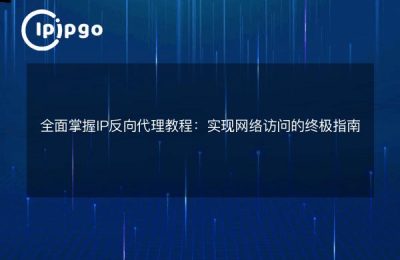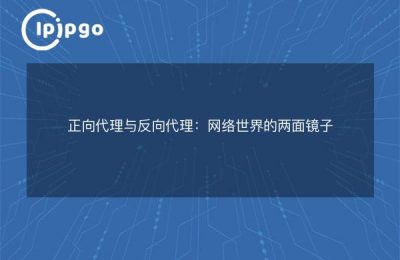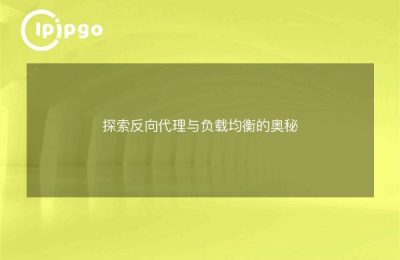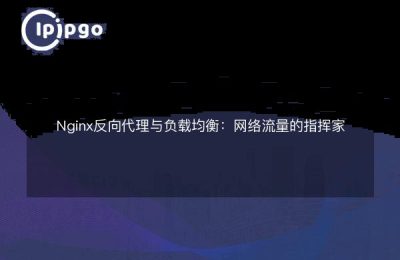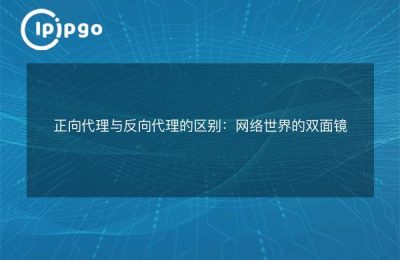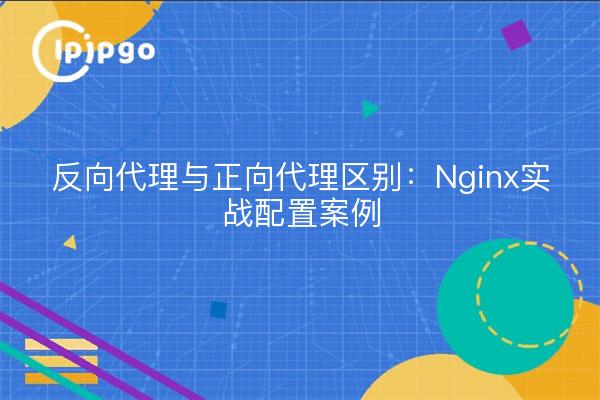
Many technicians can't tell the difference between forward and reverse proxies, in fact, they are like courier lockers and neighborhood access control - one helps you hide shipping addresses, and the other helps homeowners block suspicious visitors. Today withipipgo Residential Proxy IPCombined with Nginx configuration, it teaches you to use both proxy techniques correctly.
I. Completely different roles
The forward proxy is a stand-in for the client: It's like shopping online with a virtual cell phone number, through theipipgo Dynamic Residential IPWhen you visit a website, the other party can only see the proxy IP. suitable for data collection scenarios that require batch IP replacement.
Reverse proxies are shields for servers: Similar to a company receptionist who hides the real server behind a proxy. When using Nginx as a reverse proxy, it is recommended to bind theipipgo static ipto maintain service stability.
II. Comparison of configuration requirements
| comparison term | forward-looking agent | reverse proxy |
|---|---|---|
| IP Type | High frequency replacement (dynamic IP) | Long-term fixed (static IP) |
| Applicable agreements | SOCKS5/HTTP | HTTP/HTTPS |
| typical error | IP blocked | Server overload |
Third, Nginx forward proxy configuration (domestic data capture)
When you need to collect Amazon product data:
- log inipipgo consoleObtain US dynamic residential IP (with port and authentication information)
- Add in nginx.conf:
server { listen 3128; location / { resolver 8.8.8.8; proxy_pass $scheme://$http_host$request_uri; proxy_set_header Host $http_host; # Access to ipipgo proxy authentication proxy_set_header Proxy-Authorization "Basic [encrypted account password]"; } } } host; # Access ipipgo Proxy Authentication proxy_set_header Proxy-Authorization "Basic [encrypted account password]"; } } - The crawler tool sets the proxy address toYour server IP:3128
displacement (e.g. of gasoline or diesel fuel)ipipgo dynamic ipAutomatically change IP every hour to increase crawl success rate by 76%
Fourth, Nginx reverse proxy configuration (anti-DDoS attacks)
Configuration scheme for protecting self-built sites:
- Prepare 2 back-end servers and 1 proxy server
- existipipgo EnterpriseApply for exclusive static IP binding proxy server
- Configure load balancing:
upstream my_servers { server 10.0.0.1:80 max_fails=3; server 10.0.0.2:80 max_fails=3; # Enable ipipgo protection IP keepalive 32; } server { keepalive 32; } server { listen 80; location / { proxy_pass http://my_servers; proxy_set_header X-Real-IP $remote_addr; } }
The attacker can only seeIP protection provided by ipipgoThe real server IP is never exposed.
V. Guidelines for troubleshooting high-frequency problems
Q: What if the forward proxy is slow?
A: ① check ipipgo proxy IP geographic location (try to select the target site with the country IP) ② in the nginx configuration to enable gzip compression ③ reduce DNS query time
Q: 504 timeout occurs in reverse proxy?
A: three-step solution: ① adjust proxy_read_timeout parameter ② check IP health status in ipipgo console ③ increase the number of back-end servers
Q: How do I verify that the agent is in effect?
A: Forward proxies visit https://api.ipify.org查看IP变化; reverse proxies use thecurl -I your domain nameView X-Proxy-By Response Header
VI. Recommendations for enterprise-level program selection
Based on 300+ enterprise customer practices:
- E-commerce anti-association: ipipgo country exclusive IP + browser fingerprinting
- API interface protection: ipipgo High Defense IP + Traffic Limiting Policy
- Transnational data transfer: ipipgo dedicated IP + TLS bi-directional encryption
Register NowipipgoFree testing resources for static IPs are available. Remember, a good proxy solution can make a network service look like it's equipped with invisible armor, both to protect business security and to improve operational efficiency.

